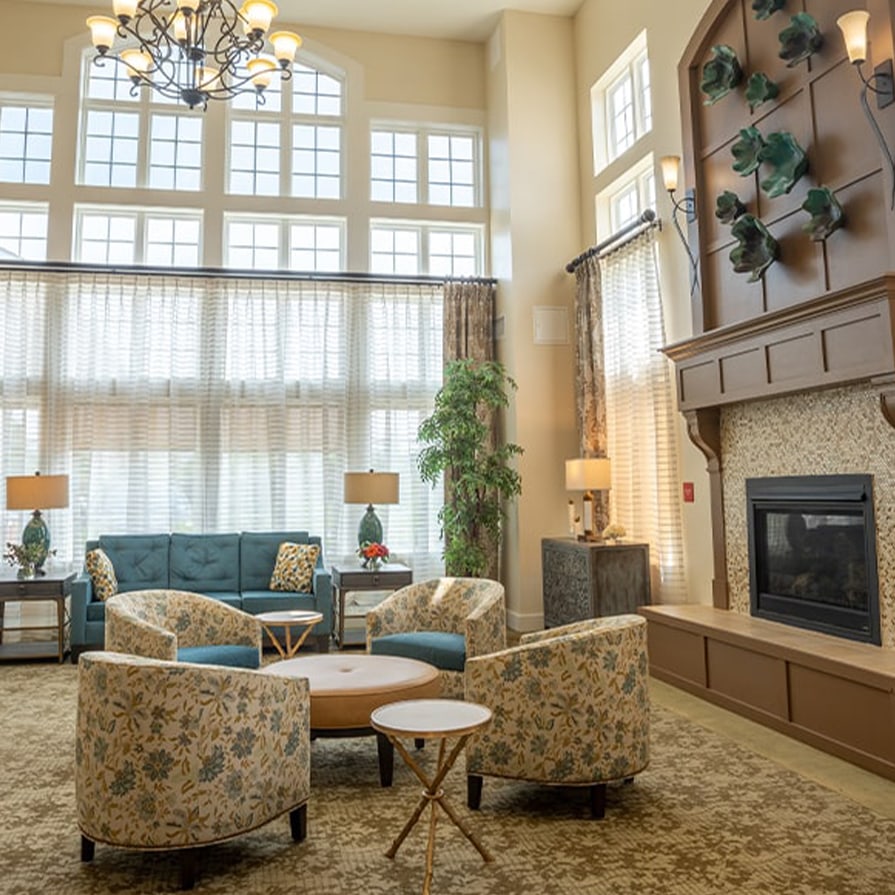Key Takeaways
- A dementia-friendly home supports safety, comfort, and independence.
- Simple design changes can reduce confusion and promote peace of mind.
- Lighting, layout, and familiar objects make everyday living easier.
- Technology and routines enhance safety while supporting connection.
Creating a Dementia-Friendly Living Space
Living at home with dementia brings unique challenges, but the right environment can make daily life much smoother. A dementia-friendly space is designed to reduce confusion, prevent accidents, and help loved ones maintain a sense of independence.
From small adjustments like clear labeling to bigger changes like improving lighting or reducing clutter, every detail contributes to creating a home where comfort and safety come first. For families, these changes also provide peace of mind—knowing the space supports their loved one’s well-being.
Why a Dementia-Friendly Space Matters
A thoughtfully designed environment does more than keep someone safe. It creates calm, encourages independence, and helps reduce frustration. Small challenges—like misplacing items, struggling to navigate hallways, or being startled by shadows—can add stress. Adjusting the home helps ease these moments and preserves dignity.
The goal isn’t to overhaul the entire house overnight. Instead, focus on gradual, meaningful changes that make everyday life simpler and more supportive for everyone.
Key Elements of a Dementia-Friendly Home
Clear Layout and Navigation
- Keep furniture in consistent places to prevent confusion.
- Use contrasting colors for walls, floors, and furniture so objects stand out.
- Add clear signs with words and pictures for key rooms like the bathroom or kitchen.
Good Lighting
- Natural light helps regulate sleep and reduce agitation.
- Use bright, even lighting in hallways and bathrooms.
- Eliminate dark corners or shadows that may cause fear or disorientation.
Safe Flooring
- Choose non-slip surfaces and avoid rugs that curl or slide.
- Ensure flooring colors contrast with walls so boundaries are easy to see.
- Remove clutter, cords, or uneven surfaces that could lead to falls.
Familiar and Comforting Spaces
- Decorate with familiar photos, furniture, and keepsakes.
- Avoid major layout changes—consistency provides reassurance.
- Keep favorite objects visible and within reach to encourage connection.

The Role of Color and Contrast
Color is powerful in a dementia-friendly home. High contrast helps with depth perception, while calming colors create soothing environments.
- Bright colors can highlight important items like light switches or door handles.
- Contrasting plates and cups help make meals easier to see and enjoy.
- Soft, neutral tones in bedrooms and living spaces support relaxation.
Avoid busy patterns on rugs or wallpaper, which can appear confusing or overwhelming.
Creating Safe and Supportive Rooms
Each room in the home can be adapted to meet the needs of someone living with dementia.
Kitchen
- Use clear containers to show what’s inside.
- Label cupboards and drawers with words or pictures.
- Install automatic shut-off devices for stoves or appliances.
Bathroom
- Add grab bars near the toilet and shower.
- Use a shower chair or handheld showerhead for comfort.
- Place colored toilet seats for contrast and easier visibility.
Bedroom
- Keep pathways to the bathroom clear.
- Add nightlights to reduce disorientation at night.
- Use weighted blankets or familiar bedding for comfort.
Living Areas
- Keep spaces uncluttered with simple layouts.
- Incorporate seating with sturdy arms to make standing easier.
- Place memory boxes or photo displays as conversation starters.
Technology That Supports Daily Living
Technology can be an incredible tool in dementia care. Simple, accessible devices can ease stress and support independence, such as:
- Smart lighting systems that automatically adjust brightness.
- Medication reminders through digital apps, pillboxes, or voice devices.
- Video chat platforms that help maintain family connections.
- GPS-enabled devices for safe movement and peace of mind.
At modern senior living communities, technology is seen as a way to support—not replace—human connection. Tools like Alexa voice skills bring updates, reminders, and contact with loved ones in ways that feel natural and empowering.
Why Is Routine and Familiarity Important?
Beyond design, routine is one of the most important aspects of a dementia-friendly home. Predictable schedules help reduce anxiety and confusion.
- Keep mealtimes and bedtimes consistent.
- Encourage regular daily activities like short walks, music, or reading.
- Use visual calendars or reminders to reinforce schedules.
Consistency in both environment and routine builds comfort, confidence, and a sense of control.
When to Seek Additional Support
While many families do their best to create dementia-friendly spaces at home, there may come a time for additional support. Memory care communities provide safety, social opportunities, and specialized programs designed for people living with dementia.
Even if care at home is working well now, visiting a community can provide families with ideas, resources, and peace of mind for the future.
Consider Memory Care at Juniper Village at Williamstown
At Juniper Village at Williamstown, we understand that small changes make a big difference. Our approach combines thoughtful design, nurturing programs, and innovative technology to create supportive spaces for those living with dementia.
From personalized neighborhoods filled with familiar cues to our use of smart technology like Juniper Connect and Alexa voice skills, we make safety and connection part of everyday living. Our team is here to guide families with resources, ideas, and encouragement as they adapt their own homes.
Ready to see how we create spaces that comfort, support, and inspire? Schedule a visit to Juniper Village at Williamstown today.







